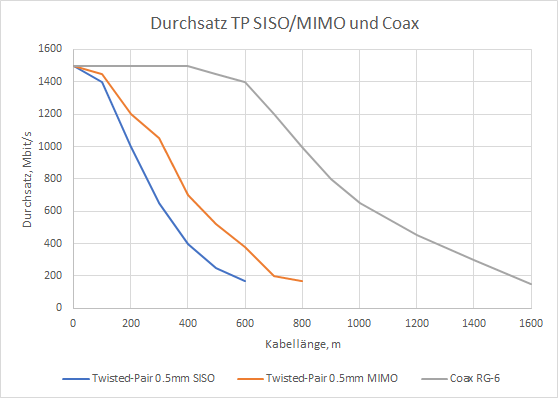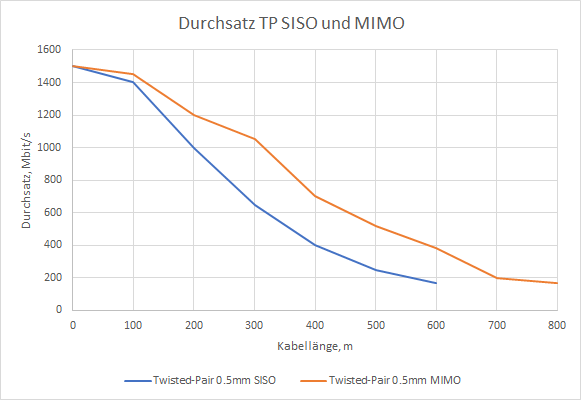FAQ
G.hn was developed with the goal of enabling networking comparable to high-quality Ethernet and fiber optic cables based on conventional telephone and coax cables, which are already present in almost all properties.
With the help of G.hn technology, the existing infrastructure in the buildings can be easily reused to provide future Gigabit Internet connections. This eliminates the need for rewiring, which is often not readily feasible anyway for structural or cost reasons.
Practically everywhere where you want fast and stable networking, but cannot use Ethernet cables. Many real estate objects have no other possibility for networking than two-core telephone or coax cables. G.hn is a perfect solution for this problem.
Whether you want to create a "simple" network connection between two rooms of a single-family home or offer hundreds of hotel guests very fast Internet access - there are practically no limits to the application scenarios of G.hn.
G.hn is transparent to any kind of data to be transmitted, it is IPv4 and IPv6 compatible. It can also be used on "the last mile" for Internet connections: e.g. fiber from the provider to the basement, further into the apartment with G.hn over the telephone cable.
On the contrary! The technique is also suitable for technical laymen.
In the simplest case, two inexpensive G.hn modems are already sufficient. They are connected directly via a telephone or coax cable in the building - your network connection is ready!
If you are planning a larger network and want to use a G.hn headend for this purpose - it also works according to the "Plug&Play" motto - connect it and use it immediately. Of course, a headend also offers various possibilities for central administration and control - important for network administrators or Internet providers.
Absolutely! Because in contrast, G.hn offers a stable cable-based data connection with gigabit speed. And that over long distances.
The aim is not to replace WLAN devices (routers, access points, etc.) completely, but to support them sensibly.
G.hn should be used wherever Ethernet cables are indispensable, but unfortunately cannot be used for certain reasons. Here are some examples:
- ls a cable-based connection (Ethernet backhaul) between components of a WLAN (mesh) system (access points, repeaters)
- For the connection of audio/video playback devices (media player, TV) and IP TV - even Ultra HD resolution is no problem for G.hn
- To connect to servers and storage devices (NAS)
In general, SISO (Single Input Single Output) refers to data transmission via one data channel, while MIMO (Multiple Input Multiple Output) refers to transmission on several channels in parallel.
Coax cables usually consist of a conductive core and the shield, so G.hn always uses the SISO method and transmits the data in the frequency range 2-200 MHz.
Telephone cables (twisted pair) often have several wire pairs, G.hn can use one pair (SISO, 2-200 MHz) or two pairs (MIMO, 2-100 MHz).
G.hn Wave 2 achieves the same maximum transmission speed of 1.5 Gbit/s on application level (sum of download and upload) for all twisted pair and coax cables.
The 1000 Mbit/s (1 Gbit/s) often relevant in practice are possible for twisted pair cables up to about 250 meters (MIMO) or 120 meters (SISO), for coax cables - up to about 800 meters.
In total, G.hn can establish a connection via twisted-pair cable up to approx. 800 meters (MIMO) or 600 meters (SISO), via coax cable - up to approx. 1800 meters. This is considerably more than is possible with classic Ethernet cables;

Coax cables are often laid in buildings in such a way that several TV or multimedia sockets are connected to one cable harness. G.hn Standard takes this fact into account and allows the connection of up to 16 G.hn clients on one coax line. Twisted pair connections, on the other hand, are always "point-to-point" (2 end devices on one line).
The high quality coax cables like RG-6 have very good electrical properties. This allows higher transmission speeds to be achieved over longer distances than via twisted pair.
Yes, the transmission rate of a G.hn connection is specified by the master terminal. It is not configured as a fixed value but as a percentage of the total bandwidth.
The master has a default ratio of 70/30 for download/upload ex works. You can adjust this ratio at any time to suit your requirements. A setting of 50/50 creates a synchronous data rate (same speed in both directions).
Yes, it is possible. Similar to classic Ethernet technology, G.hn can also transmit power via the data line at the same time. However, G.hn clearly surpasses the capabilities of Ethernet, because power can be supplied up to 600 metres. Ethernet cables, on the other hand, can be up to 100 metres long.
A suitable headend (G4224) and the appropriate modems (G4202TCP) are required for power transmission. The modem provides standard RJ45 Ethernet ports with PoE+ according to standard 802.3af/at (15/30 Watt) for the connection of network devices, the length of the Ethernet line can be another 100 metres in accordance with the standard.
This means that G.hn can be used to set up a much larger network with a central power supply, as the distance to the end device can be up to 700 metres!
Contact us
